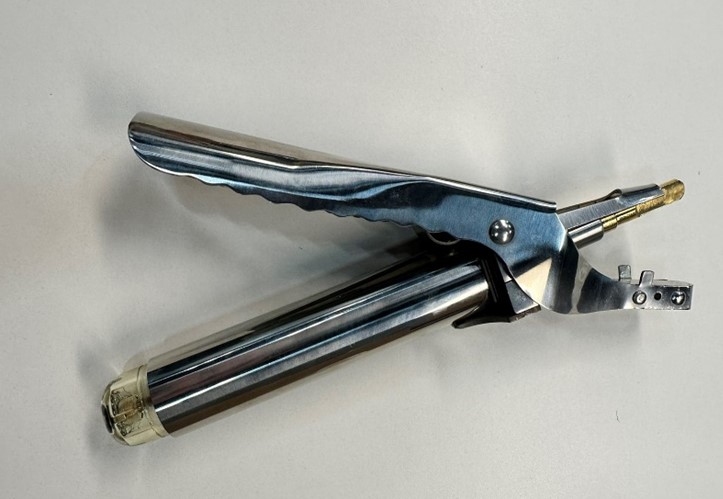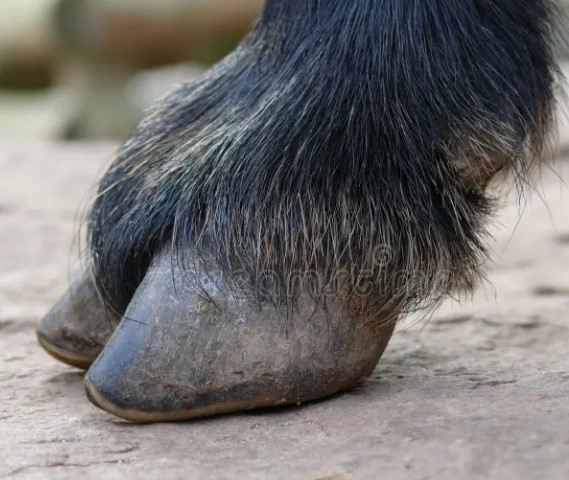Not just encephalitis and Lyme disease. What infectious diseases are carried by ticks in Belarus

In the Brest region, a warm winter woke ticks ahead of time. When the temperature rises, arachnids become more active in other regions of the country. Tatyana Dorozhenkova, Associate Professor of the Department of Epidemiology of the Belarusian State Medical University, told BelTA about what infectious diseases are carried by ticks and how not to become a victim of them.
- Ticks carry some infectious diseases. Which of them are of particular concern?
- Ticks are keepers and carriers of many diseases. At least 40 pathogenic pathogens can be found in ixodid ticks alone, including those of a viral, bacterial nature, as well as rickettsiae and protozoa. These can be tick-borne encephalitis viruses, borrelia, spirochetes, anaplasma, rickettsia, ehrlichia, babesia, Powassan viruses, pathogens of Omsk or Crimean hemorrhagic fevers, and some others.
Currently, Lyme disease is a moderately common tick-borne infection in Belarus. The disease is caused by Borrelia, which are transmitted by the bite of an infected carrier or by accidentally rubbing the hemolymph of a crushed tick into the skin. The disease affects the skin, central NERVOUS SYSTEM, musculoskeletal system. Lyme disease can have a chronic or relapsing course, which sometimes leads to partial or complete disability. The most well-known marker of the disease is erythema that appeared after a tick bite in the form of a red spot on the skin. Erythema should not be confused with the primary allergic reaction of the skin to a bite, which lasts 2-3 days after the removal of the tick, and then disappears and has nothing to do with erythema.
Infections less common, but severe, include tick-borne encephalitis, which is not bacterial, but viral in nature. For the Western European variant of tick-borne encephalitis in our territory, moderately severe neurological disorders are more characteristic. Infection with tick-borne encephalitis is possible not only through the bite of an infected tick (transmissible route), but also through the use of raw MILK from sick goats (alimentary route).
Cases of tularemia are reported almost every year in the republic. The disease is characterized by a variety of clinical forms, including damage to the eyes, throat, lungs, and lymphadenitis. The incubation period is from 3 to 14 days. Sources of infection are sick mouse-like rodents, water rats, muskrats and other carriers. In addition to ticks, mosquitoes and horseflies are involved in the transmission of pathogens. The disease begins so quickly that the sick can even name the time of onset of the disease. After the illness, its relapses are possible, and in the case of a severe course, complications such as meningitis, meningoencephalitis, lung abscess, pericarditis, peritonitis are not uncommon. Single or sporadic cases of tularemia are registered in Belarus. So, for example, in 2020, three cases were noted, and in 2021, 10 people fell ill.
Rickettsia were also found in ticks on the territory of Belarus, and the carriers of these pathogens were more often meadow ticks than forest ticks. Rickettsia causes infections that are classified as tick-borne spotted fevers. In Belarus, for the first time in 2012, a high infection of ticks with rickettsia was shown (from 13% to 40%), and ticks in the Brest, Grodno, Vitebsk regions turned out to be the most infected.
Babesiosis is also transmitted by a tick bite. The disease is still little studied, but it is known that in about 1% of cases, its pathogens, babesia, are found in ixodid ticks. In ticks, they persist for life and are passed on to the next generation. With the penetration of babesia into the blood, parasites are detected in erythrocytes. At the same time, the patient has anemia with impaired microcirculation, which can lead to acute renal failure.
Relatively recently (in 2011), the causative agent of human granulocytic anaplasmosis (HGA) and monocytic ehrlichiosis was identified in ticks. These two diseases are clinically close, and improved laboratory diagnostics helped to identify pathogens.
In the case of HAH, the parasite enters the blood with the saliva of an infected tick, spreads throughout the body, affecting the liver, kidneys, causing inflammation of all internal organs. The incubation period is on average 2-3 weeks. Anaplasmosis begins with chills, fever above 38.5 degrees, which lasts for several days. Weakness, catarrhal phenomena, cough appear. Then join the headache, muscle pain, abdominal pain, diarrhea. The average duration of illness is 10 to 14 days. In most cases, it proceeds easily.
The first case of HAS in Belarus was described in 2013. Infection of ticks with the causative agent of granulocytic anaplasmosis is the highest in Belovezhskaya Pushcha - up to 27%, and on average in the republic it ranges from 3% to 4%.
With monocytic ehrlichiosis, the bone marrow, liver, spleen, and thymus suffer. The incubation period averages 13 days. Symptoms include chills, fever, skin rash, headache, muscle and joint pain. Shortness of breath appears, lymph nodes may increase. In case of damage to the nervous system, paralysis, confusion, impaired coordination, convulsions are possible. The chronic course of the disease is not excluded.
In Belarus, there are no accurate statistics on granulocytic anaplasmosis and monocytic ehrlichiosis yet. But where complex laboratory diagnostics of infections carried by ticks is carried out, GAS and monocytic ehrlichiosis are detected quite often. This suggests that many cases of seasonal acute febrile conditions of unknown etiology that occur in humans after tick bites may be associated with these infectious diseases.
In practice, quite often tick-borne infections occur with an atypical clinical picture, which gives clinicians a reason to suspect a mixed infection. Clinical observations show that any mixed infection is accompanied by a more severe course and prolonged fever.
- What are the symptoms of tick-borne encephalitis in Belarus? Is there a Far Eastern type?
- The most typical form of tick-borne encephalitis is poliomyelitis with fever, disorders in the muscles of the neck and shoulder girdle. The virus primarily infects the human nervous system. The manifestations of the disease are diverse, and each has its own characteristics. In the meningoencephalitic form, there may be disturbances in consciousness, orientation, facial expressions, problems with swallowing.
Belarus is characterized by the West European genotype of the causative agent of tick-borne encephalitis. It is also found in the countries of Central and Northern Europe. The incubation period can be 30 days, but on average does not exceed 7-14. The onset of the disease is acute, the temperature rises to 38-39 degrees and stays at this level for up to two weeks. There is a headache, a feeling of weakness, nausea, vomiting, sleep is disturbed. Perhaps a violation of consciousness, a delusional state. At the beginning, the disease of tick-borne encephalitis is similar in symptoms to the flu. In the future, flaccid paralysis of the muscles of the neck and shoulder girdle develops. There may be sensations of crawling on the skin, it is difficult for the sick person to keep his HEAD in the usual position. Tick-borne encephalitis in some cases is accompanied by swelling of the brain and other organs. The recovery period is long
In the most severe form of tick-borne encephalitis, which is caused by another virus genotype - the Far East, tick-borne viral encephalomyelitis is recorded. The disease in 24% of cases ends in paralysis, mortality - up to 40%. But such a nosological form is recorded mainly in the Far East and practically does not occur in Belarus. However, there are carriers of the Far East tick-borne encephalitis virus in Belarus. This is a taiga tick. The upper limit of its range is located in the north of the republic, passes through the Vitebsk region and partly through the central part of the republic (Borisovsky district).
- What is the risk of contracting Lyme disease and tick-borne encephalitis from an infected tick?
- According to experts, in Belarus the risk of contracting tick-borne encephalitis when bitten by an infected tick is approximately 1 in 490 bites. But the risk of contracting tick-borne borreliosis is much higher - 1 in 20-100 suctions. But these indicators depend on the number of ticks in the area, their general infection, the number of warm-blooded hosts in natural foci and their infestation, on the frequency of people's contacts with ticks in natural foci of tick infections, on the characteristics of natural conditions and many other factors.
- If the tick is on the body for less than 12 hours, will it have time to transmit pathogens?
- It takes time for ticks to transmit pathogens. But this is only the time that he will spend crawling on clothes in search of a suitable place for suction. Such a place can be the groin, inner thigh, armpit, neck, on the chest in the area of the mammary glands, behind the ear, scalp, those areas where there is thin skin. It usually takes only a few hours from the moment of attack to suction. As a rule, the tick sticks imperceptibly, as it injects painkillers when it bites. The longer it continues to feed, the higher the likelihood of infection transmission. Of course, if it is an infected tick. However, not all ticks are infected.
- Is it possible to remove a tick with bare hands?
- I would rephrase this question: why is it dangerous to remove a tick with bare hands? The answer is simple: there is a risk of crushing it with your fingers. On the fingers there are microcracks invisible to the eye, scratches, into which hemolymph can get, the contents of the abdomen from a torn off tick. If the tick contained pathogens, they will enter the wound. It is safe to remove the tick with a special twister, you can use a thread loop, ordinary thin tweezers, grabbing the mouth apparatus by the proboscis as close to the skin as possible, but not by the abdomen. After removal, the bite site must be treated with an antiseptic.
- Is it worth taking a blood test for antibodies to borrelia and tick-borne encephalitis virus?
- Having established the diagnosis, the DOCTOR will prescribe an analysis for antibodies to the pathogen. If there is a suspicion that Lyme disease is likely, the blood will have to be donated twice, since for the diagnosis it is necessary to verify the growth dynamics of the initial antibody titer. Usually, after contacting a medical institution with a tick bite and in the absence of contraindications, the infectious disease specialist prescribes chemoprophylaxis with an antibiotic. This helps to prevent other bacterial tick infections. Chemoprophylaxis is most effective when treated within the first three days after a tick bite.
If there are contraindications to the antibiotic prescribed by the doctor, a referral for a laboratory test of the tick will be issued. The direction indicates the address of the healthcare organization where the study will be performed.
In recent years, tick attacks have been recorded in parks and squares of cities, in particular MINSK (in the Tsnyanka area, in Drazhna, Stepyanka, Loshitsky Park and other green areas). Summer residents should understand that precautions must be taken in relation to ticks in their area. To do this, you should mow the vegetation in time, remove deposits of dry branches, and get rid of mouse-like rodents in a timely manner.
Vaccination against tick-borne encephalitis as a measure of personal prevention is indicated in the case of work in natural foci. In Belarus, those who work on the territory of the National Park "Belovezhskaya Pushcha" are vaccinated. There is no vaccination for Lyme disease. You can protect yourself from the attack of ticks with the help of repellent aerosols - acaricidal repellents. You can even soak clothes with repellents. When going to the forest, it is better to wear light-colored clothes for a picnic in order to notice and remove a crawling tick in time. Wear a hat, remove your hair, leave as few exposed parts of your body as possible. Do not neglect self- and mutual examinations: this will allow you to notice the tick even before it is sucked. Personal safety measures will help keep you healthy.
BELTA.
Read together with it:
- Progress Agro presented two cloned calves in the Krasnodar region.According to Sergey Yakovenko, HEAD of the Altragene laboratory, large fetuses are a common problem in cloning, and researchers are continuing to work to reduce this risk. Previously, culture media containing bovine serum containing growth factors could contribute to increased calf weight. Now, a synthetic medium is being used, which has shown positive results. All newbornsThe calves were manually...
- Analysts reported a drop in Russian oil shipments to India.In November, Russian oil shipments to India fell by 66% compared to the previous month due to "logistics tactics" that importers resorted to in anticipation of sanctions, ET reports. Moscow considers the measures illegal.Russian oil shipments to India fell 66% from November 1 to 17 compared to the same period the previous month, according to The Economic Times (ET), citing a report from analytics ...
- The Russian-Serbian NIS has requested permission from the US to operate under sanctions.NIS has requested permission from the US Treasury Department to conduct operations while negotiations on a change in ownership structure are ongoing. Washington is demanding Russia's withdrawal from NIS. Serbian authorities have warned that NIS will be unable to operate without this license.Serbia's state-owned oil company (Naftna Industrija Srbije, NIS) has requested permission from the United St...
- Telegraph написала о «потере связи с реальностью» ЗеленскимНа фоне политического и военного кризиса на Украине Зеленский заключает сделки по покупке оружия и газа, которые Киев не сможет себе позволить без финансирования ЕС, что остается под вопросом, пишет журналист The Telegraph Президент Украины Владимир Зеленский на фоне масштабного коррупционного скандала в стране, к которому причастны его сторонники, заключил несколько сделок о закупках в оборонном ...
- Bloomberg узнал, как санкции снизили закупки Китаем российской нефтиПо оценке Rystad Energy AS, китайский импорт российской нефти морем может сократиться на 500–800 тыс. баррелей в день, что составляет две трети обычного уровня Общий объем импорта российской нефти в Китай снизился на две трети из-за санкций США, сообщает BLOOMBERG. По его данным, крупные государственные нефтеперерабатывающие компании приостановили закупки нефти марки ESPO, которая составляет основ...
- "Истинный полешук" Русый рассказал, как нарушил стиль работы на совещании у ПрезидентаМихаил Русый 18 ноября, Минск. Александр Лукашенко 18 ноября собрал совещание по темам развития районов Припятского Полесья и реализации соответствующей программы. Основным докладчиком на мероприятии выступил Михаил Русый - "истинный полешук", как назвал его Президент, уполномоченный представитель главы государства в Брестской области и председатель Постоянной комиссии по законодательству и госуда...
- Основатель Wolt Мики Кууси: «Платите сотрудникам больше, чем они ожидают»К 35 годам Мики Кууси дважды попал в список FORBES, создал приложение доставки Wolt, которое продал за $8 млрд, превратил локальную конференцию Slush в один из крупнейших технологических форумов Европы. Вот каких принципов он придерживается «В жизни есть много вещей, которые нам просто приходится делать, например есть. И время — единственная валюта, которую мы не можем вернуть… Это не вопрос лени,...






























































